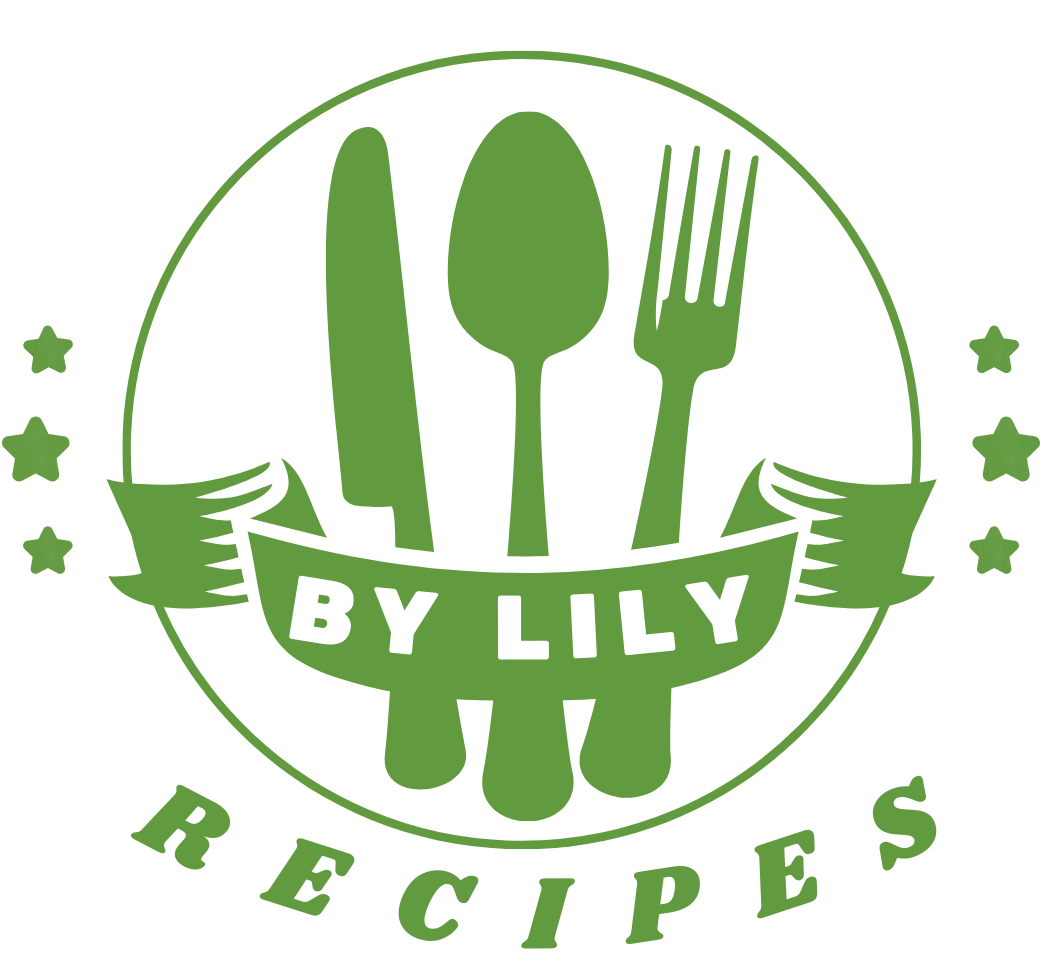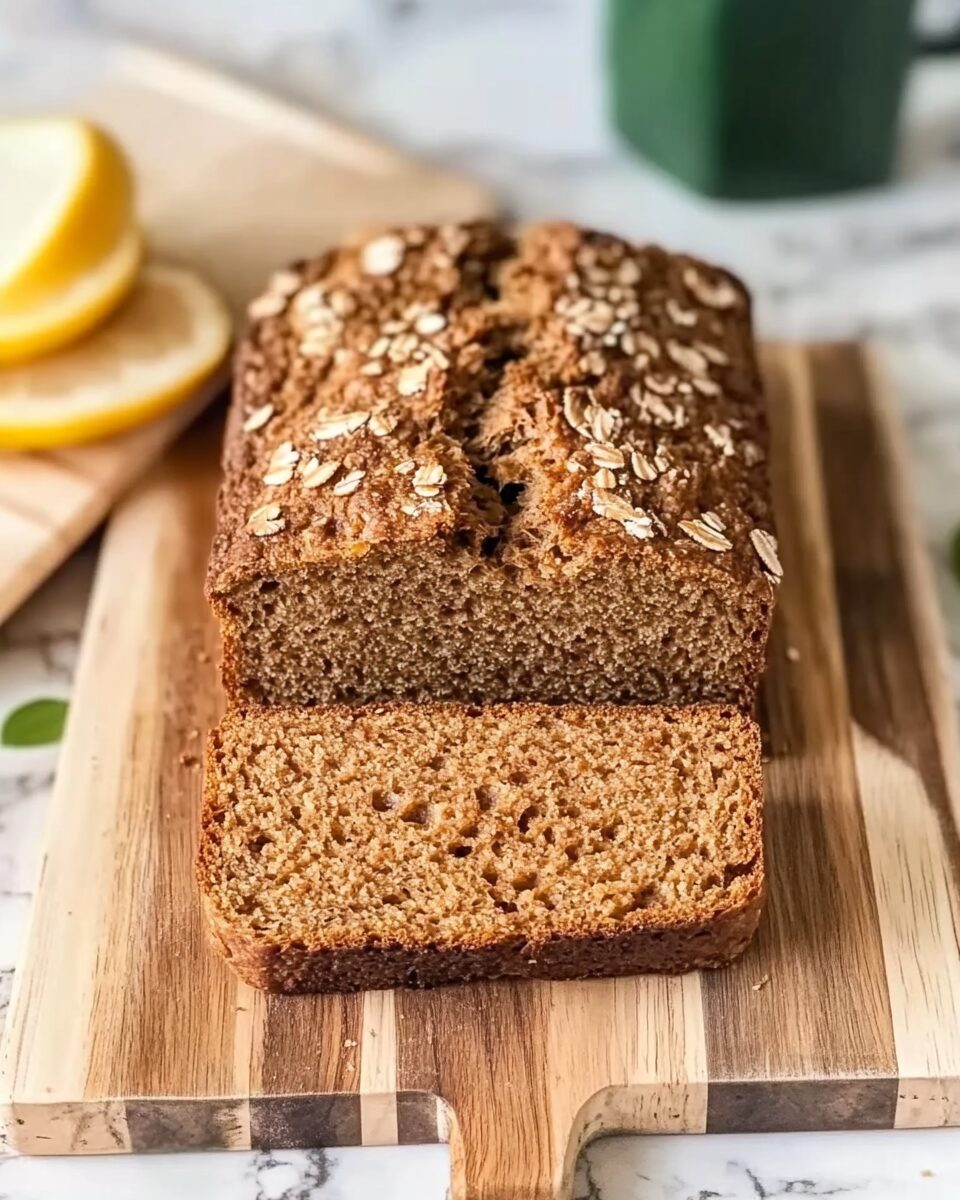Irish Brown Bread is a traditional staple in Ireland, known for its hearty texture and nutty flavor. This simple, no-yeast bread is perfect for serving with butter, honey, or marmalade. It pairs well with soups and stews or as part of a full Irish breakfast.
Full Recipe:
Ingredients
- 1 ½ cups whole wheat flour
- 1 ½ cups all-purpose flour
- 1 cup old-fashioned oats (plus 2 tbsp for topping)
- ½ cup oat bran
- ½ cup mixed seeds (sunflower and pumpkin)
- 4 tbsp granulated sugar
- 1 tsp salt
- 1 ½ tsp baking soda
- 2 eggs
- 1 ½ cups buttermilk
Directions
- Preheat the oven to 350°F. Grease a 9×5 inch loaf pan with cooking spray and dust with whole wheat flour.
- In a large bowl, mix all dry ingredients except the 2 tbsp of oats reserved for topping.
- In another bowl, whisk together eggs and buttermilk.
- Combine wet and dry ingredients, stirring until a wet, sticky dough forms. If needed, add more buttermilk, one tablespoon at a time, until all flour is incorporated.
- Pour the mixture into the loaf pan and sprinkle the reserved oats on top.
- Use a sharp knife to make a 2-inch slit down the center of the loaf.
- Bake for 1 hour or until a skewer inserted in the center comes out clean.
- Let cool on a wire rack before slicing and serving.
Nutrients
- Calories: 205 kcal
- Carbohydrates: 36g
- Protein: 8g
- Fat: 4g
- Saturated Fat: 1g
- Cholesterol: 31mg
- Sodium: 374mg
- Potassium: 196mg
- Fiber: 4g
- Sugar: 6g
- Calcium: 54mg
- Iron: 2mg
Enjoy this wholesome and easy-to-make Irish Brown Bread fresh or toasted with your favorite spreads!
The Origin and History of Irish Brown Bread
Irish Brown Bread has deep roots in Ireland’s culinary history. The bread’s origins date back to the early 19th century when it was introduced as a way to make use of the country’s abundant whole wheat. It was primarily made with whole wheat flour and buttermilk, two ingredients that were readily available in Irish households. In the past, brown bread was often seen as a more affordable alternative to white bread, which was considered a luxury in many parts of Ireland.
The rustic nature of Irish Brown Bread made it the perfect accompaniment to traditional Irish meals, such as stews, soups, and chowders. Over time, this simple bread became more than just a side dish—it became a part of Irish culture and daily life. Many families would bake this hearty bread regularly, and it would often be served fresh with a thick spread of butter or honey, making it a comforting and satisfying treat.
Today, Irish Brown Bread is still a staple in Irish homes, cafes, and restaurants. It is enjoyed by locals and visitors alike and is a key feature in Irish cuisine. The bread is beloved for its rich, earthy flavor, dense crumb, and slightly chewy texture, all of which come from the unique combination of ingredients used in the recipe.
Key Ingredients in Irish Brown Bread
The beauty of Irish Brown Bread lies in its simplicity. The recipe is easy to prepare, yet it results in a bread that is packed with flavor and nutrients. Let’s take a look at the key ingredients that make this bread so special:
-
Whole Wheat Flour: This is the foundation of Irish Brown Bread. Whole wheat flour gives the bread its hearty texture and deep flavor. It also adds nutritional value, as it is rich in fiber, vitamins, and minerals, making the bread more filling and nutritious than breads made with white flour.
-
All-Purpose Flour: While whole wheat flour is the primary flour, the addition of all-purpose flour gives the bread a lighter, softer texture. It helps balance the density of the whole wheat flour and ensures the bread rises properly.
-
Old-Fashioned Oats: Oats are another essential ingredient in Irish Brown Bread. They add extra fiber, texture, and a slight nutty flavor that complements the whole wheat flour. The oats also help keep the bread moist, giving it a tender crumb.
-
Oat Bran: This ingredient further enhances the bread’s texture and adds a dose of fiber. Oat bran is also rich in B vitamins and antioxidants, making it a nutritious addition to the recipe.
-
Mixed Seeds (Sunflower and Pumpkin): These seeds are optional, but they add a delightful crunch and extra layer of flavor to the bread. They also contribute a healthy dose of fats and proteins, making the bread even more satisfying.
-
Buttermilk: Buttermilk is a key ingredient in Irish Brown Bread, as it adds moisture and a slight tanginess. The acidity in buttermilk helps activate the baking soda, giving the bread its light, airy texture. Buttermilk is also a classic Irish ingredient that has been used in baking for generations.
-
Baking Soda: Since this bread is made without yeast, baking soda is used as the leavening agent. It reacts with the acidity of the buttermilk to help the bread rise and achieve its characteristic texture.
Why Irish Brown Bread is Special
Irish Brown Bread is beloved for its hearty, wholesome texture and nutty flavor. The absence of yeast gives it a more rustic, dense quality, making it a perfect complement to savory dishes like stews, soups, and roasted meats. It can also be enjoyed as a simple snack with butter, jam, or marmalade. The combination of whole wheat flour, oats, and seeds makes the bread highly nutritious, providing fiber, protein, and healthy fats in every slice.
One of the things that sets Irish Brown Bread apart from other breads is its ease of preparation. Unlike traditional yeast-based breads that require hours of rising and kneading, Irish Brown Bread comes together quickly. The dough is mixed, poured into a loaf pan, and baked for about an hour. There’s no need for proofing or extensive kneading, making it perfect for a busy weeknight when you want to enjoy homemade bread without the hassle.
Serving Suggestions for Irish Brown Bread
Irish Brown Bread is incredibly versatile and can be served in many ways. Here are some of the most popular ways to enjoy this delicious bread:
-
With Butter and Jam: This is the simplest and most traditional way to serve Irish Brown Bread. A thick smear of butter and a spoonful of your favorite jam or marmalade makes for a satisfying snack or breakfast.
-
With Soups and Stews: Irish Brown Bread is often served alongside hearty soups and stews, where its dense texture soaks up the broth beautifully. It’s especially delicious with potato soup, beef stew, or any Irish dish that calls for a good, crusty bread to accompany it.
-
As Part of an Irish Breakfast: For a full Irish breakfast, Irish Brown Bread is a must-have. It pairs perfectly with eggs, bacon, sausages, black pudding, and grilled tomatoes, providing a hearty base to this classic meal.
-
Toasted with Honey: Toast a few slices of Irish Brown Bread and top them with honey for a simple and satisfying treat. The bread’s nutty flavor and the sweetness of the honey create a perfect balance.
-
As a Sandwich Base: The thick, hearty slices of Irish Brown Bread make an excellent base for sandwiches. Try it with cold cuts, cheese, or even grilled vegetables for a wholesome lunch.
Health Benefits of Irish Brown Bread
Irish Brown Bread is more than just a tasty treat—it’s also a healthy addition to your diet. The use of whole wheat flour, oats, and oat bran means that this bread is packed with fiber, which can help support digestion and regulate blood sugar levels. The seeds and oats in the bread provide healthy fats and protein, making it a filling and satisfying option.
The inclusion of buttermilk also adds a dose of probiotics, which can support gut health and boost the immune system. Since Irish Brown Bread is made without any refined sugars or processed ingredients, it is a much healthier option than store-bought bread. It’s also a great source of B vitamins, iron, and magnesium, which are essential for energy production, bone health, and overall well-being.
Conclusion: A Delicious and Wholesome Bread
Irish Brown Bread is a timeless classic that brings together simple ingredients to create a flavorful and nutritious loaf. Whether enjoyed with a traditional Irish breakfast, served with soups and stews, or simply toasted with butter and jam, it’s a versatile and satisfying bread that can be enjoyed in many ways. Its dense, hearty texture and nutty flavor make it the perfect complement to savory dishes, while its natural ingredients provide numerous health benefits.
By adding this easy-to-make Irish Brown Bread to your recipe rotation, you’ll be able to enjoy a homemade, wholesome bread that brings a taste of Ireland to your kitchen. So why not give this recipe a try and enjoy the comforting, satisfying flavors of Irish Brown Bread at home?






